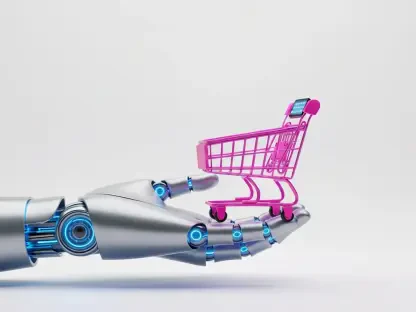In the ever-evolving beverage industry, strategic leadership changes can signal a company’s intent to adapt and thrive amid fierce competition, and Coca-Cola Beverages Florida, the sixth-largest bottler in the U.S., recently promoted three seasoned professionals to vice president roles, sparking discussions across the sector. Serving over 21 million people across 47 counties with a workforce of 5,000 associates and extensive facilities, this bottler’s moves are under close scrutiny. This roundup gathers insights, opinions, and analyses from various industry voices to explore how these appointments aim to boost operational efficiency and market responsiveness. The focus is on understanding diverse perspectives about what this leadership overhaul means for stakeholders and the broader market landscape.
Unpacking the Strategic Promotions: Why Now?
Industry Reactions to Leadership Timing
The timing of Coca-Cola Florida’s decision to elevate internal talent to key vice president positions has drawn varied reactions. Some industry analysts view this as a proactive step to strengthen go-to-market strategies during a period of heightened consumer demand for diverse beverage options. They argue that aligning leadership with operational goals now positions the company to capitalize on emerging trends like sustainability and digital supply chains over the next few years, from 2025 onward.
Others, however, express caution, suggesting that such transitions might face challenges in a market already disrupted by logistical bottlenecks and shifting consumer preferences. A segment of supply chain consultants emphasizes that while internal promotions ensure cultural continuity, the risk of delayed adaptation to external innovations remains a concern. This split in opinion highlights the delicate balance between stability and the need for fresh approaches in a dynamic region like Florida.
A third perspective from beverage sector commentators focuses on the competitive angle, noting that rival companies are also revamping leadership to address similar market pressures. They point out that Coca-Cola Florida’s move could be seen as a defensive strategy to maintain its stronghold against smaller, agile competitors gaining ground with niche products. This viewpoint underscores the urgency of aligning leadership with immediate operational demands.
Operational Impact: What Experts Anticipate
When it comes to the operational implications of these promotions, industry observers are keenly analyzing the potential outcomes. Many operational strategists suggest that elevating leaders with deep-rooted experience in the Coca-Cola system ensures a seamless transition, particularly in critical areas like distribution and manufacturing. They believe this expertise will help streamline processes across the company’s four Green Circle-certified facilities and eighteen distribution centers.
Conversely, a faction of market analysts warns that internal promotions might limit exposure to groundbreaking practices from outside the system. They argue that while familiarity with company operations is a strength, it could hinder the adoption of cutting-edge technologies or unconventional strategies that external hires might bring. This concern reflects broader industry debates about balancing tradition with innovation.
Another angle comes from logistics professionals who highlight Florida’s unique challenges, such as diverse consumer demographics and complex distribution networks. Their take is that the success of these new vice presidents will hinge on their ability to tailor operations to regional nuances, ensuring that efficiency gains translate into tangible customer satisfaction. This localized focus adds a layer of complexity to the operational expectations placed on the new leadership.
Spotlight on the New Vice Presidents: Diverse Opinions
Gregory Park as VP of Operational Execution
The appointment of Gregory Park to VP of Operational Execution has elicited a range of feedback from industry circles. Many operational consultants commend his background in strategy and transformation within various Coca-Cola entities, viewing his promotion as a signal of intent to refine execution at every level. They anticipate that his expertise will drive measurable improvements in how the company responds to market shifts.
On the flip side, some skeptics within the beverage sector question whether a predominantly internal career path equips Park to tackle unforeseen disruptions. They suggest that while his familiarity with the system is an asset, exposure to broader industry challenges could be limited, potentially impacting bold decision-making. This critique fuels discussions about the trade-offs of insider leadership.
A different take from business transformation experts emphasizes Park’s potential to bridge strategic planning with on-the-ground results. They argue that his prior roles in B2B operations position him uniquely to align corporate goals with practical outcomes, especially in a territory as vast as Florida. This optimism points to a belief in his capacity to turn vision into action.
James Boyce Leading Distribution Efforts
James Boyce’s elevation to VP of Distribution, backed by 17 years of operational roles within the Coca-Cola system, has sparked interest among distribution specialists. Many in this field praise his extensive experience, including stints as plant manager and territory general manager, as a foundation for optimizing the company’s sprawling network of distribution centers. They see his tenure as a guarantee of continuity in a critical function.
However, a contrasting opinion from logistics analysts suggests that long-term internal experience might create blind spots to emerging distribution models, such as automated warehousing or last-mile innovations. They caution that without integrating external best practices, the company risks lagging behind competitors adopting such advancements. This perspective raises questions about adaptability in a fast-changing field.
An additional viewpoint from regional market watchers focuses on Boyce’s ability to address Florida-specific logistical hurdles, like seasonal demand spikes and urban congestion. They believe his deep operational knowledge will be instrumental in crafting tailored solutions that enhance delivery efficiency, positioning the company favorably against local rivals. This localized optimism adds a practical dimension to the discourse.
Nathan Logan Steering Manufacturing Operations
Nathan Logan’s promotion to VP of Manufacturing Operations, with 17 years in food and beverage including time at Nestlé Waters, brings a mixed bag of reactions. Manufacturing consultants largely applaud his track record in performance management and continuous improvement, especially since joining Coca-Cola Florida in recent years. They expect his skills to elevate production standards across the company’s facilities.
In contrast, some industry critics argue that while Logan’s diverse background is promising, the transition to a leadership role in a larger, more complex system might pose integration challenges. They note that scaling his prior successes to fit Florida’s extensive operations will test his adaptability, potentially slowing initial progress. This concern reflects broader uncertainties about leadership transitions.
A further perspective from sustainability advocates highlights Logan’s potential to push manufacturing toward greener practices, given industry trends favoring eco-friendly production. They suggest that his focus on improvement could align with long-term goals like reducing carbon footprints, setting a benchmark for competitors. This angle introduces a forward-looking hope tied to broader societal priorities.
Broader Industry Trends: Leadership as a Game-Changer
Supply Chain Optimization in Focus
Across the beverage industry, supply chain optimization remains a hot topic, and Coca-Cola Florida’s leadership changes are seen as a case study in this arena. Many supply chain experts assert that promoting leaders with specialized skills in execution, distribution, and manufacturing mirrors a sector-wide push to enhance efficiency. They view this as a strategic alignment with the need for faster, more reliable delivery systems.
A differing opinion from technology consultants points to the industry’s growing reliance on data-driven tools, suggesting that leadership alone cannot address systemic inefficiencies without tech integration. They argue that while these appointments are a step forward, their impact depends on embracing digital solutions to complement human expertise. This tech-centric view adds a modern twist to traditional leadership discussions.
Another insight from industry trendsetters emphasizes the role of regional factors, like Florida’s unique consumer base and logistical demands, in shaping such decisions. They note that leadership must prioritize localized supply chain innovations to stay competitive, a challenge these new vice presidents are expected to tackle head-on. This regional lens underscores the complexity of scaling national strategies to specific markets.
Talent Development: Internal vs. External Debate
The debate over internal promotions versus external hires continues to divide industry thought leaders in light of Coca-Cola Florida’s choices. Proponents of internal talent development argue that nurturing existing employees, as seen with these promotions, fosters loyalty and preserves company culture. They believe this approach minimizes disruption while leveraging deep institutional knowledge.
Opponents, however, contend that external hires often bring fresh perspectives necessary for transformative change, especially in industries facing rapid evolution. They suggest that while internal promotions ensure stability, they might limit exposure to diverse strategies that could redefine competitive edges. This ongoing tension reflects a broader struggle within the sector to balance continuity with reinvention.
A middle-ground perspective from human resources specialists advocates for a hybrid model, blending internal growth with selective external input. They propose that while Coca-Cola Florida’s current strategy leans on insiders, future leadership roles could benefit from external voices to challenge status quo thinking. This balanced view offers a potential roadmap for sustained innovation.
Key Takeaways from the Roundup
Looking back, this exploration of Coca-Cola Florida’s leadership promotions through varied industry lenses revealed a spectrum of insights. The discussions underscored the strategic intent behind elevating experienced insiders to vice president roles, with opinions split on the merits of continuity versus the need for external innovation. Perspectives on operational impacts highlighted both the promise of streamlined processes and the risks of integration challenges, while broader trends pointed to supply chain optimization and talent development as critical focus areas.
For those keen to delve deeper, exploring industry reports on beverage sector leadership strategies or case studies on regional operational challenges proves valuable as next steps. Businesses aiming to mirror such moves are encouraged to assess internal talent pools rigorously while remaining open to external ideas that could spark transformation. This balanced approach, inspired by the diverse views gathered, offers a practical path forward for navigating similar transitions in competitive landscapes.









